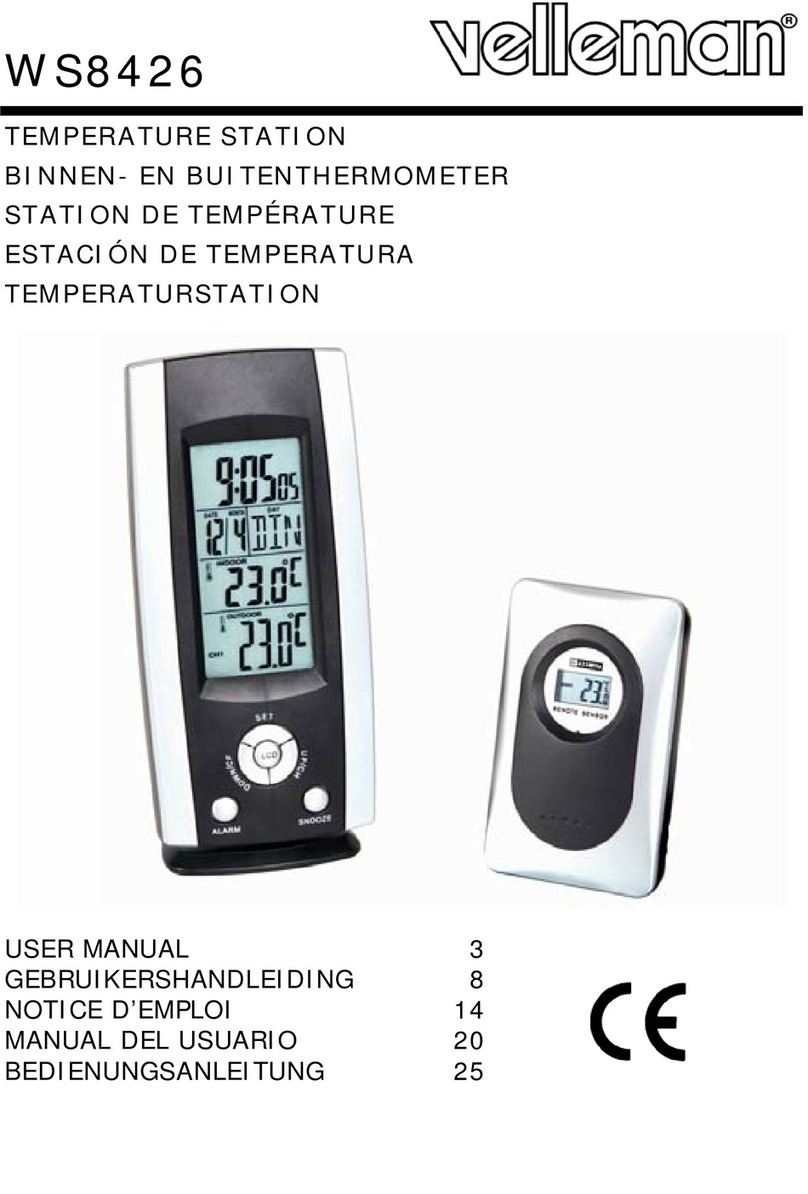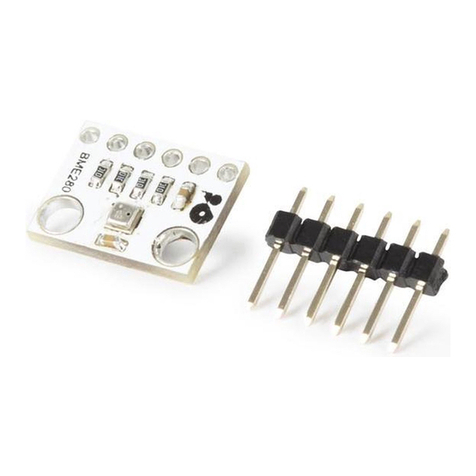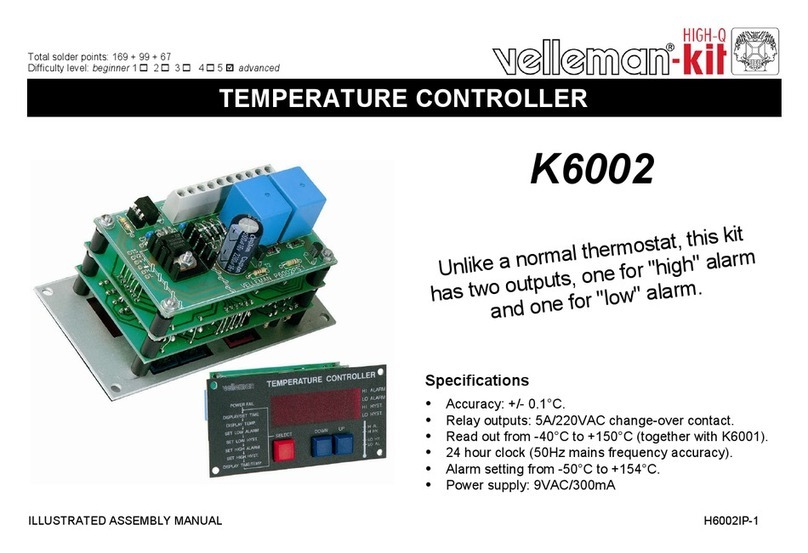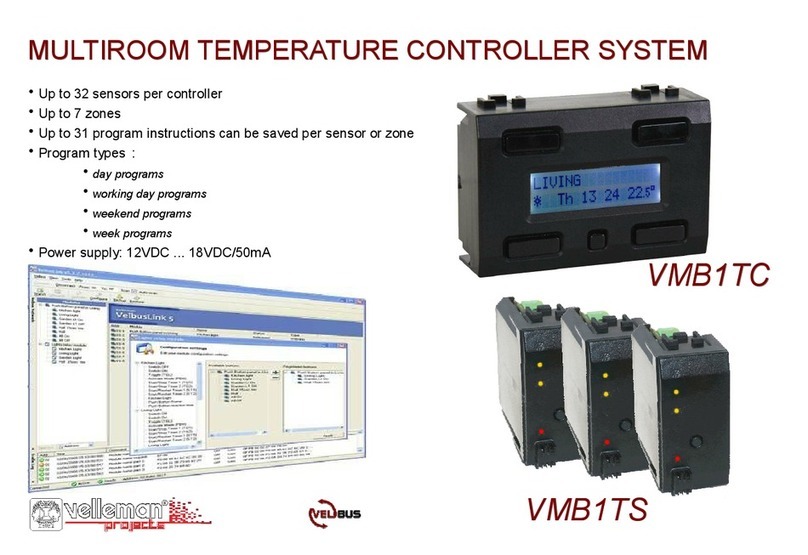7
ENGLISH
4. Assign a relay channel to a temperature sensor function (can also be performed using PC, advised)
On the sensor module:
Set the sensor module in anti-freeze mode by pressing the push button on the front panel repeatedly until all LED’s are off.
On the relay module:
ModeTime1
ADDR
First remember the address of the
module to reinstate it later on. Set the
Address rotary switches to 'C1', 'C2',
'C3, or 'C4', depending on the chosen
channel. The 'MODE' LED of that
channel will flash to indicate learning
mode.
Set the MODE and TIME1 rotary switches of the
chosen channel to
'0' (instant control)
Only available for VMB1TS
Select one of the below functions: (ask someone to help if needed)
To assign a room heater or room water valve to a relay contact (>> this will mostly be used)
Press button 13 on the sensor until relay engages
To assign the air-conditioning system (fan or compressor control) to a relay contact:
Press button 10 on the sensor until relay engages.
To assign the central heating system day/night setting to a relay contact:
Press button 11on the sensor until relay engages.
To assign an extra fan for quick heating or cooling (boost) to a relay contact:
Press button 12 on the sensor until relay engages
To assign the central heating system main pump to a relay contact
Press button 7+ button 13 on the sensor until relay engages
To assign a low temperature alarm to a relay contact
Press button 7+ button 12 on the sensor until relay engages
To assign a high temperature alarm to a relay contact
Press button 7+ button 11 on the sensor until relay engages
7
10 11 12 13
Do not forget to set the address of the
relay module back to its original value.
Repeat the procedure for other sen-
sors or other functions.































